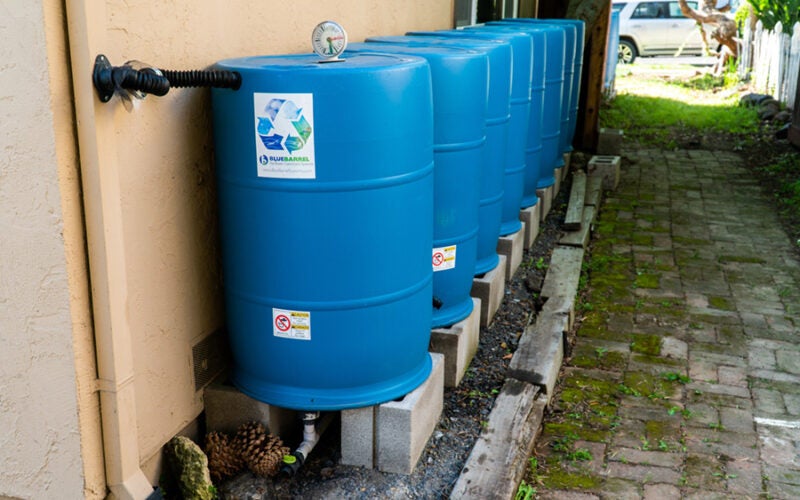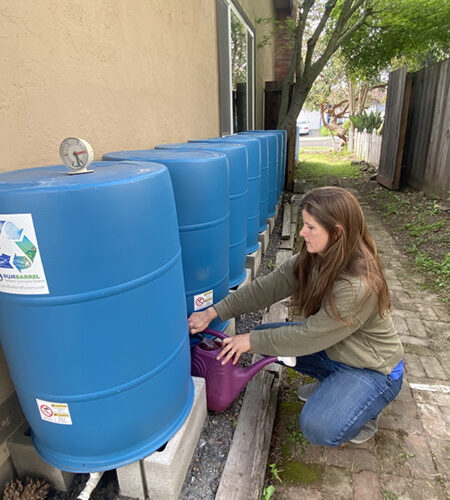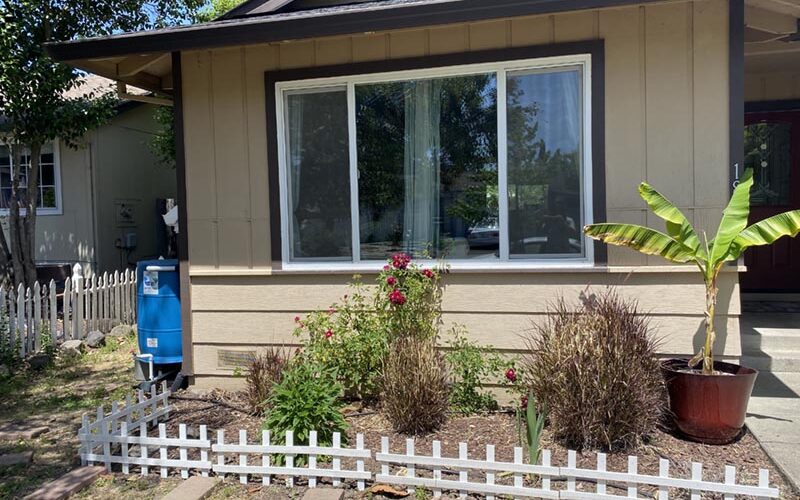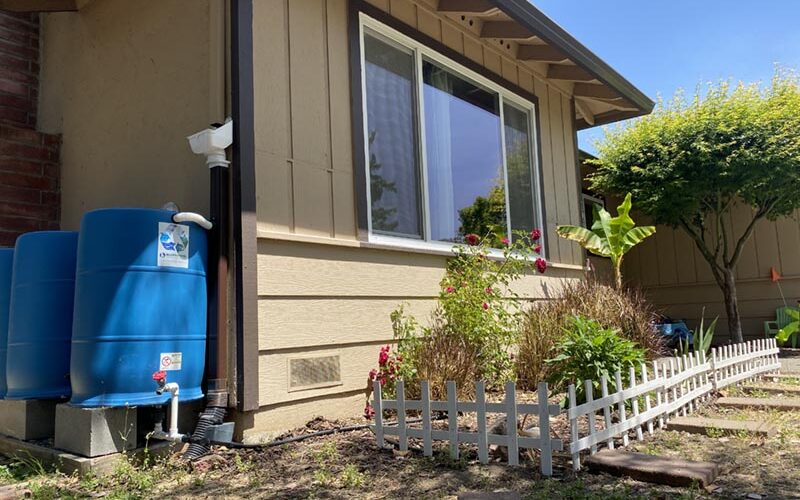BlueBarrel Rainwater Catchment Systems
BACK TO FULL TOUR
Garden Features
Edible Garden
Drip Irrigation
Pesticide Free
Rainwater Harvesting System
Reclaimed/Recycled Materials
Wildlife Habitat
This western Santa Rosa home demonstrates just how much you can do with rain barrels on a small suburban lot.
With rain catchment systems collecting from three separate downspouts on the 1,350 square foot home, an interconnected 3-barrel system, 7-barrel system, and 8-barrel system make for a total of 18 barrels and 990 gallons of water storage tucked discreetly along the sides of the house. With continual drawdown and recharge during the rainy season, the total water savings is hard to estimate, but it is much more than 990 gallons annually, especially when there are dry-stretches between rainstorms, as is typical in California.
Rainwater Collection Benefits
Rainwater is not only free and eco-friendly, it’s also the absolute highest-quality water you can provide for your plants. Rainwater is the only water source that is 100% free of the salts, minerals, and treatment chemicals that tend to accumulate in soil. While potted plants suffer most from salt/mineral accumulation, all plants benefit from the purity and “aliveness” of rainwater, which has the perfect pH balance and nitrate delivery for organic gardening. This is not by coincidence, but by nature’s design! Watch the video to see how rainwater can be used to sustain edibles, ornamentals, fruit trees, bird habitat, and more!
For those thinking California is too dry for rainwater catchment, just remember you get over 600 gallons of high-quality irrigation water for every single inch of rain falling on a 1000 square-foot roof surface. That’s enough to fill 11 standard 55-gallon rain barrels with that single inch! Now multiply that by annual rainfall (and the actual size of your home) to see just how much water is available for free from your own rooftop.
System Details
The daisy-chained barrel systems featured on this site are a great fit for small-to-medium-sized lots. Beginners can get started with just a few barrels and add on gradually, surprising themselves with just how much high-quality water is available when you are prepared to collect it, even in drought years.
Front System
A 3-barrel system in the front waters an ornamental landscape of bunch-grasses and salvia through an automated, gravity-fed drip irrigation system.
Side & Back System
An 8-barrel system on the west side irrigates the edible garden in the back. Rainwater is also used for starting seasonal vegetables, the main focus for these suburban gardeners, and for the occasional deep watering of the fruit trees on the property.
Backup System
An additional 7-barrel system on the east side provides backup water for hand watering, system recharge, and other non-potable needs.
These homeowners could certainly connect more barrels, and they plan to do so! For now, collected rainwater typically lasts them through July, and they switch to city water for the tail end of summer until it starts raining again.




Plants in this Garden
Favorite Plants
Any Seasonal Veggies
Perennial Kitchen Herbs
Apple and Apricot Trees
Recommended Resources
BlueBarrel
Rainwater Catchment SystemsGardening Tips
Rainwater Is The Best Water
Plants do much better when irrigated with rainwater (especially potted plants!). Rainwater is free of the salts, chemicals, and heavy minerals found in other water sources, and it naturally has optimal pH balance and nitrate delivery.
Rainwater Is Abundant
You get over 600 gallons of high quality water for every single inch of rain falling on a 1,000 square foot surface. This makes rainwater harvesting a common sense water conservation technique, even in dry climates.